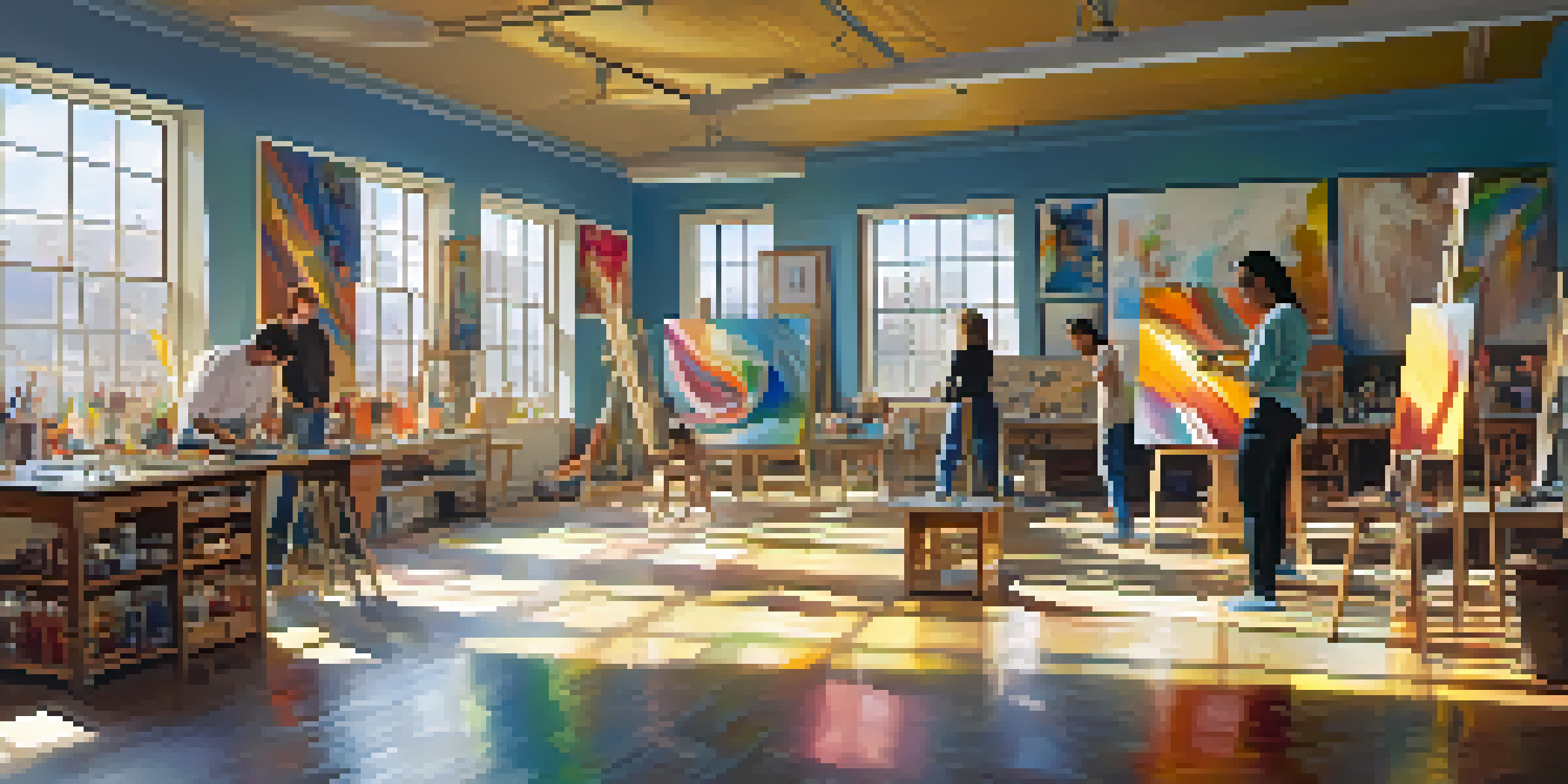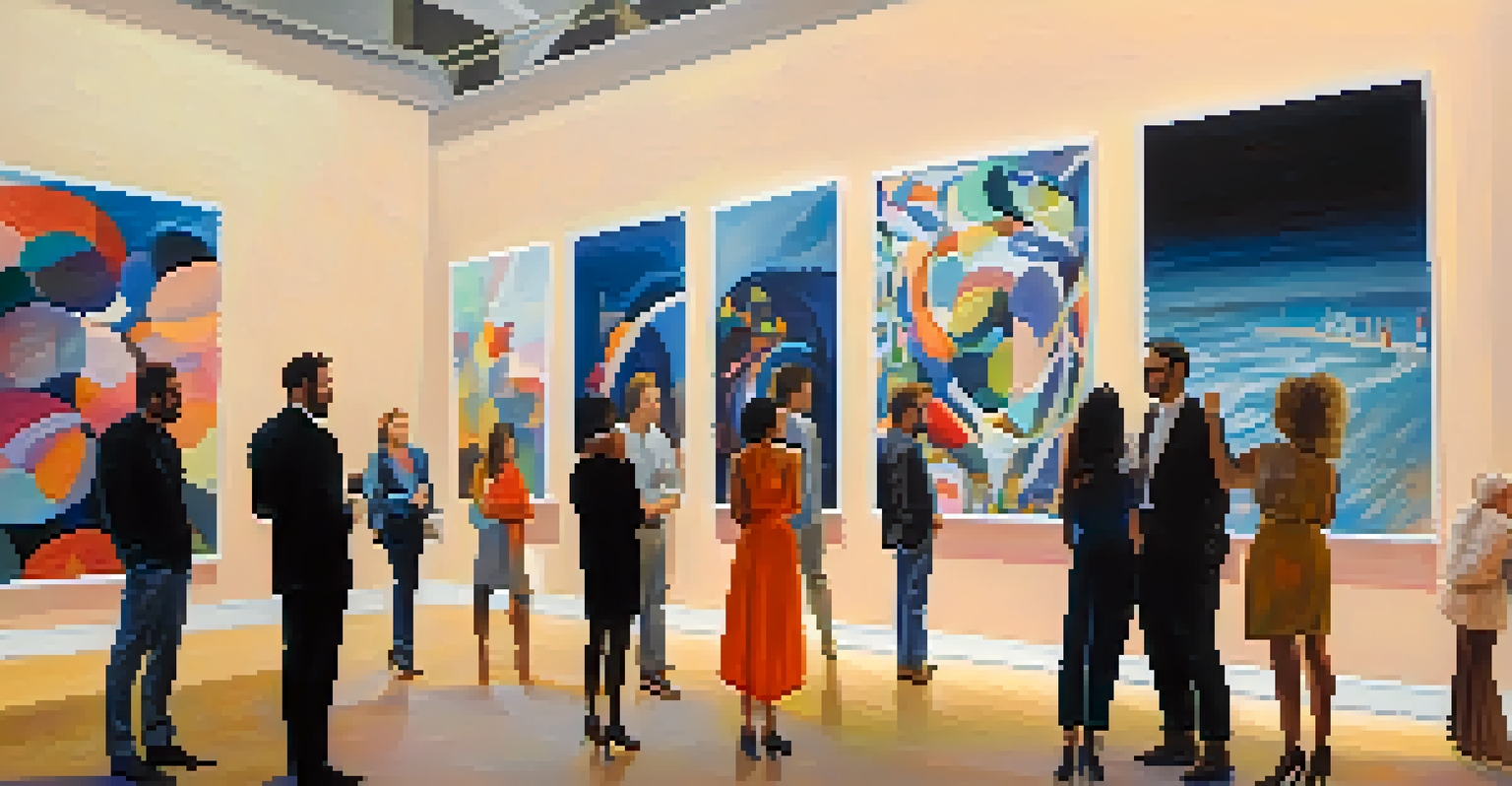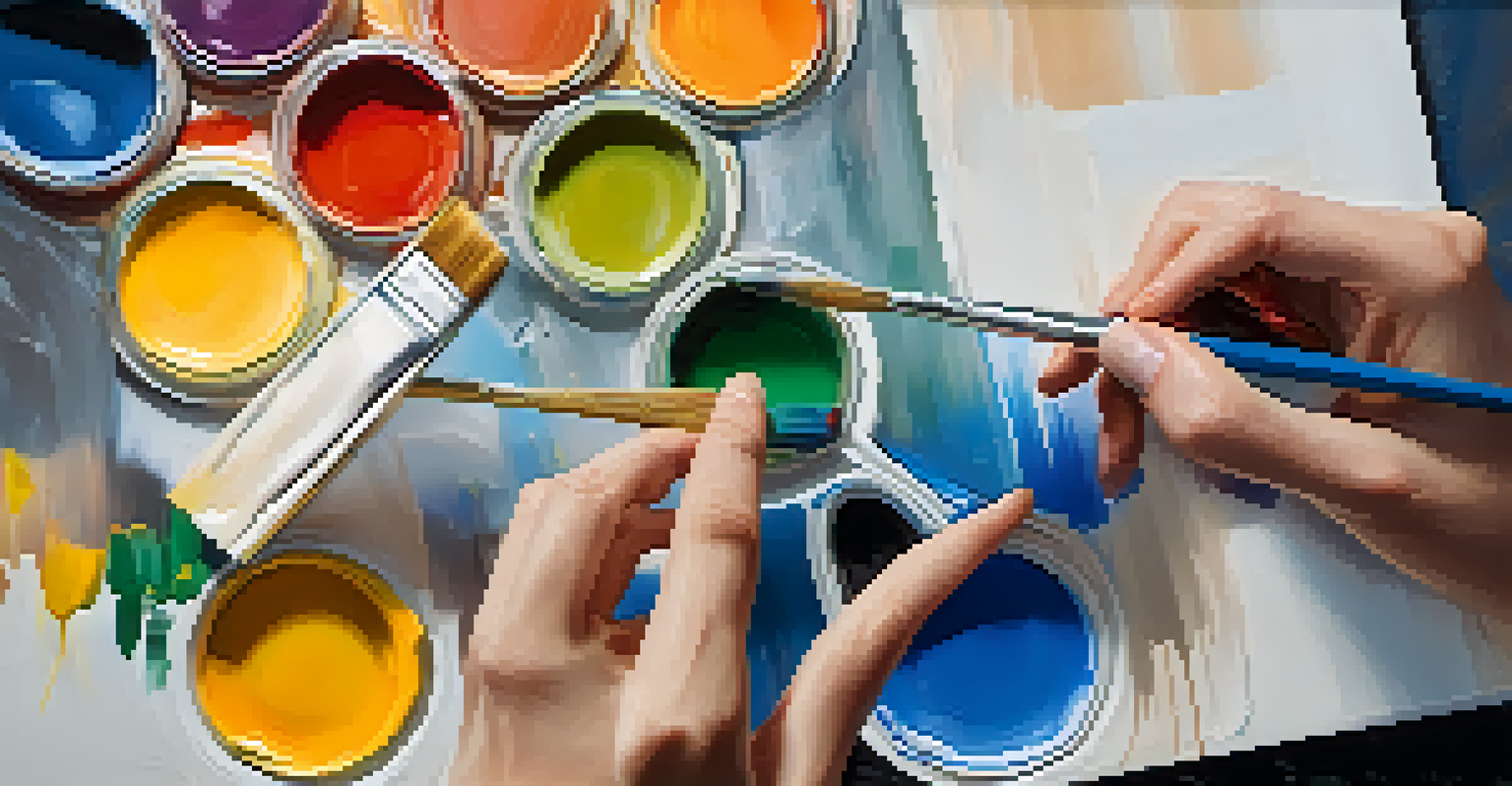The Synergy of Artists: Collaboration in the Painting Process

Understanding the Essence of Artistic Collaboration
Collaboration in art is like a dance where two or more artists share their unique styles and ideas. It's not just about combining techniques; it's about creating a dialogue that enhances the creative process. When artists come together, they open themselves up to new perspectives, which can lead to unexpected and beautiful outcomes.
Alone we can do so little; together we can do so much.
For instance, think of a musician and a painter working side by side. The musician's rhythms might inspire the painter's brushstrokes, while the painter's colors could influence the musician's melodies. This interaction often sparks innovation and pushes each artist beyond their usual boundaries.
Ultimately, collaboration fosters an environment where creativity can flourish. It allows artists to challenge each other, learn new skills, and explore concepts they may not have considered on their own, making the final piece a richer tapestry of ideas.
Historical Examples of Collaborative Artistry
Throughout history, there have been remarkable instances of artistic collaboration that have shaped the art world. One notable example is the partnership between Pablo Picasso and Georges Braque, who together pioneered the Cubist movement. Their exchanges not only transformed their individual styles but also had a profound influence on modern art.

Another great example is the collaboration between the famous artist Andy Warhol and the musician Lou Reed. Warhol's vibrant visuals complemented Reed's experimental music, resulting in groundbreaking work that still resonates today. These partnerships illustrate how different art forms can converge to create something entirely new.
Artistic Collaboration Enhances Creativity
Collaborating allows artists to share unique perspectives, leading to innovative and enriched artistic outcomes.
These historical collaborations remind us that art is not created in isolation. By looking back at these partnerships, we can see how sharing ideas and techniques can lead to innovative movements that redefine artistic boundaries.
The Benefits of Collaborative Painting Projects
Collaborative painting projects offer a plethora of benefits to participating artists. One major advantage is the pooling of resources, which can lead to higher quality work than an individual might achieve alone. For example, when artists combine their materials and skills, they can create larger, more complex pieces that would be difficult to tackle solo.
Great things in business are never done by one person; they're done by a team of people.
Moreover, working with others can be incredibly motivating. Artists often find that the energy of a group can inspire them to push their limits and explore new techniques. This shared enthusiasm can transform the painting process into a lively and invigorating experience.
Additionally, collaboration encourages communication and feedback, which are vital for artistic growth. Engaging with peers allows artists to receive constructive criticism and new ideas, ultimately refining their craft and expanding their creative horizons.
Finding the Right Collaborators for Your Art
Choosing the right collaborators is crucial for successful artistic partnerships. Artists should seek out individuals whose strengths complement their own, creating a balanced dynamic. For example, a detail-oriented artist might pair well with someone who excels in broader strokes or conceptual thinking.
It's also important to consider compatibility in terms of artistic vision and working style. When artists share similar goals but bring different perspectives, they create a fertile ground for creativity. Open communication about expectations and boundaries is key to ensuring a fruitful collaboration.
Choosing the Right Collaborators Matters
Finding collaborators with complementary strengths and shared artistic visions is crucial for successful partnerships.
Ultimately, the best collaborations are built on mutual respect and a shared passion for art. When artists connect on a personal and professional level, the synergy can lead to extraordinary results that neither could achieve alone.
Techniques for Successful Artistic Collaboration
Successful artistic collaborations can benefit from specific techniques that enhance the process. One effective method is brainstorming sessions, where artists can freely exchange ideas without judgment. This approach fosters an open environment, allowing creativity to flow naturally.
Another technique is to establish clear roles and responsibilities early on. By defining who is responsible for what, artists can avoid misunderstandings and ensure that everyone's contributions are valued. This clarity helps maintain focus and keeps the project on track.
Finally, setting regular check-ins throughout the collaboration can help artists stay aligned. These meetings provide opportunities to discuss progress, address any challenges, and celebrate milestones, keeping the momentum and energy high throughout the project.
Overcoming Challenges in Collaborative Art
While collaboration can be incredibly rewarding, it also comes with its challenges. Differing opinions on artistic direction can lead to tension, so it's essential to approach conflicts with empathy and a willingness to compromise. Finding common ground can help maintain a positive atmosphere.
Time constraints can also pose a significant challenge. Artists may have different schedules and commitments, which can affect progress. To counter this, setting a realistic timeline and allowing for flexibility can help accommodate everyone's availability while keeping the project moving.
Celebrate Collaborative Achievements
Organizing exhibitions and sharing the creative process online can honor the collective effort and inspire others.
Lastly, remembering the ultimate goal of the collaboration is vital. If artists focus on the shared vision and the joy of creating together, they're more likely to navigate challenges successfully and emerge with a final piece that reflects their collective effort.
Celebrating Collaborative Art: Exhibitions and Beyond
Once a collaborative painting project is complete, celebrating the achievement is essential. Organizing an exhibition can be a fantastic way to showcase the collective work and recognize each artist's contribution. This not only honors the effort put into the project but also provides visibility to the artists involved.
Additionally, sharing the collaborative process on social media can engage a wider audience. Behind-the-scenes content, such as videos of brainstorming sessions or time-lapse recordings of the painting process, can capture the essence of teamwork and creativity, enticing viewers to appreciate the final product.

Ultimately, celebrating collaborative art reinforces the idea that art is a shared journey. By acknowledging each other's contributions and the synergy created through collaboration, artists can inspire others to explore the transformative power of working together.